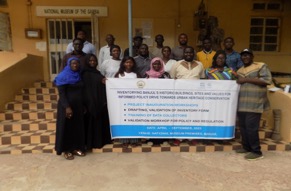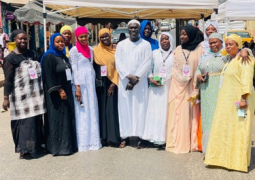
The training was organised by the National Centre for Arts Culture (NCAC) and funded by UNESCO Paris through the Participation Program meant for informed policy towards urban heritage conservation and valorization into UNESCO World Heritage Tentative List.
Data Collectors were trained on topics including introduction to urban heritage, significance/importance of preserving urban heritage, identification/classification of urban heritage, legal and regulatory frameworks.
Hassoum Ceesay, the Director General of NCAC said urban heritage can be referred to as the list of heritage elements located in urban areas. He added that these include archaeological vestiges, historical buildings, vernacular architecture, historical gardens, social practices, rituals, festive events, among others.
Commenting on the significance of preserving urban heritage, he explained that it is an essential part of preserving the cities and making them more live able. “It involves the preservation of historic buildings, green spaces, and other natural features in order to protect a city’s unique character and culture.”
Michael Campbell, presenting on condition assessment and risk analysis noted that historic structures and monuments are the most important part of cultural heritage and human civilization, adding that it is imperative to protect those structures for future generations.
He added that historic monumental structures that constitute the big part of historic heritage are made up of masonry materials such as bricks, stones, wood, among others.
He said assessing the condition of urban heritage sites and conducting risk analysis is a crucial step in preserving and protecting these valuable assets. He expressed their readiness to help data collectors assess the condition of urban heritage sites, identify deterioration, structural issues, environmental threats, and potential risks.
Other topics covered during his presentation were environmental threat and potential risks; understanding the context, visual inspection, deterioration identification, structural issues, risks analysis, documentation and reporting among others.





